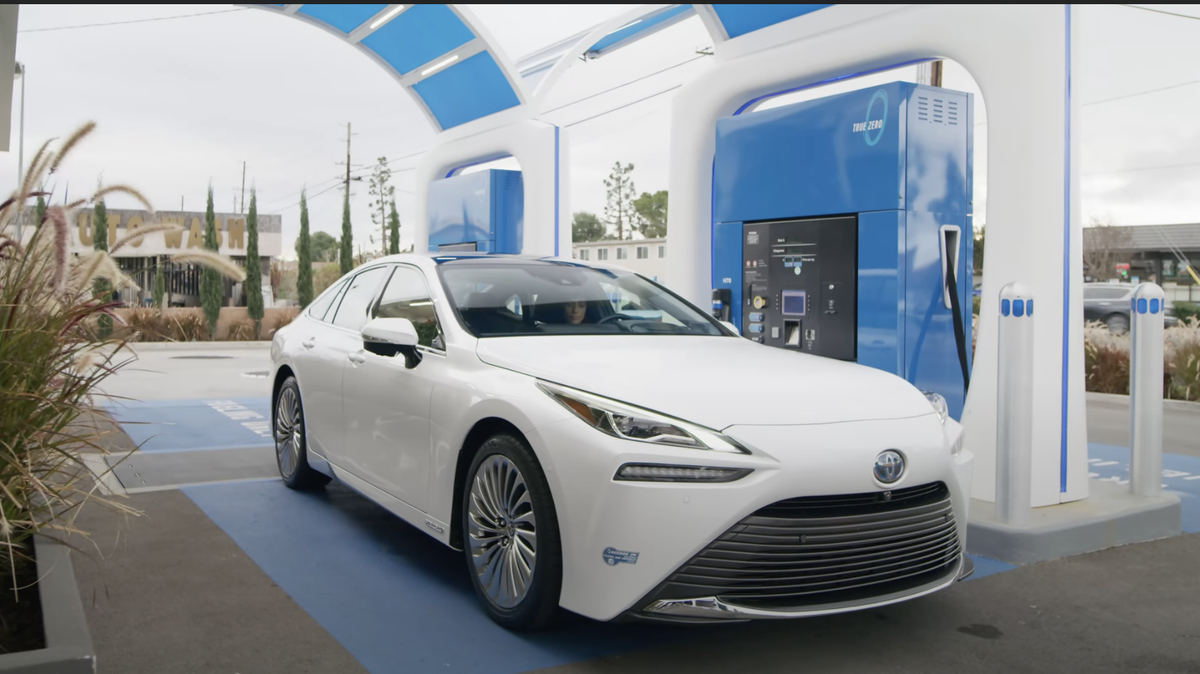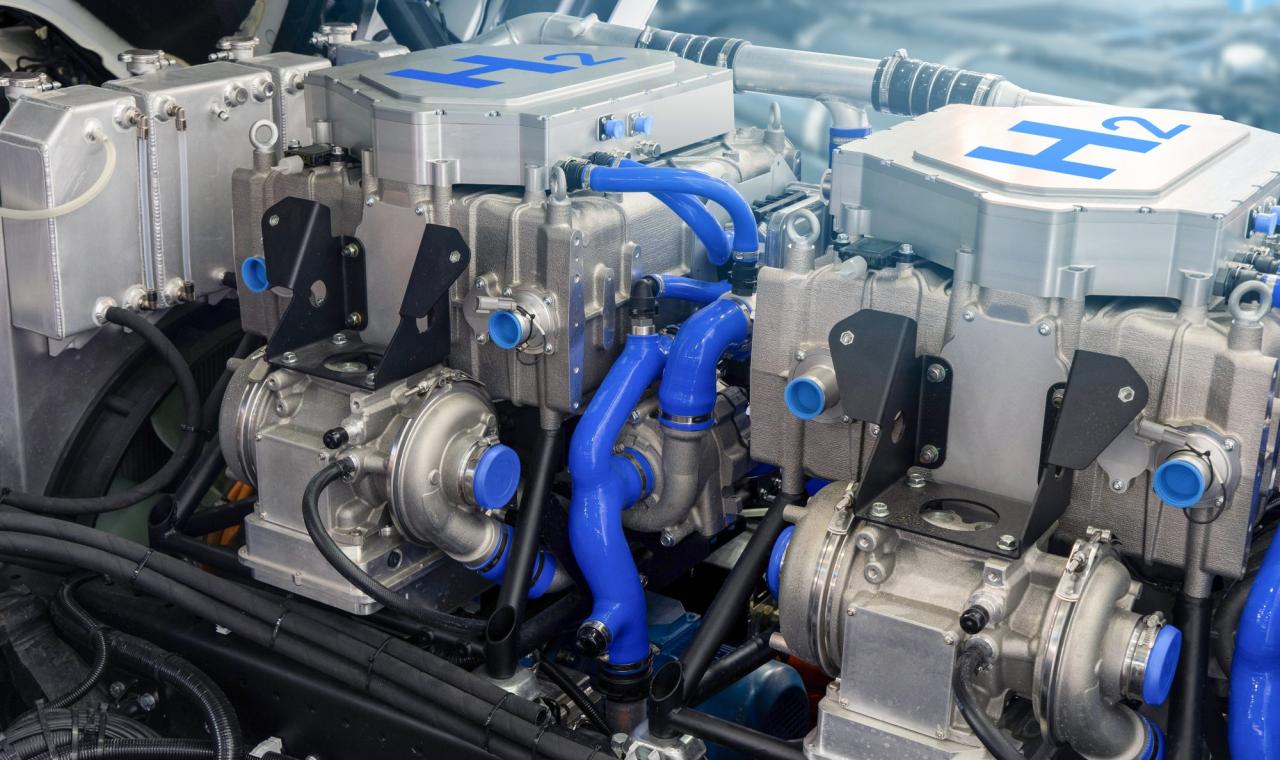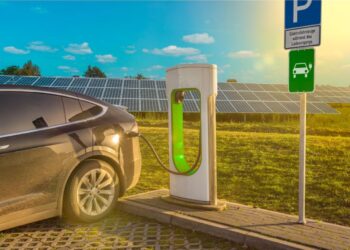In the global race toward a zero-emission future, the conversation is often dominated by electric vehicles (EVs). However, another powerful and transformative technology is rapidly gaining momentum: the hydrogen-powered vehicle. These vehicles, which use a fuel cell to convert hydrogen gas into electricity, represent a compelling and complementary solution to battery-electric cars. They offer a unique set of advantages, from fast refueling to a longer driving range, that make them particularly well-suited for heavy-duty, long-haul, and commercial applications. The rise of hydrogen as a clean energy source is not a distant dream; it is a burgeoning reality that is poised to change the face of transportation and energy production.
This comprehensive guide will take a deep dive into the world of hydrogen-powered vehicles. We will explore the fundamental technology behind fuel cells, the critical challenges and breakthroughs in hydrogen production and infrastructure, and the key applications where hydrogen is poised to become the dominant sustainable solution. By the end, you will have a clear understanding of why hydrogen is a crucial and irreplaceable part of the global clean energy portfolio. The future of transportation is not about a single solution but a diverse and highly efficient portfolio of technologies that are more integrated, intelligent, and sustainable than ever before.
A. How Hydrogen Fuel Cells Work

The technology behind a hydrogen-powered vehicle, also known as a Fuel Cell Electric Vehicle (FCEV), is a modern marvel of chemistry and engineering. Unlike a traditional internal combustion engine that burns fuel, a fuel cell generates electricity through a chemical reaction, with water as its only byproduct.
- A. The Core Components: The heart of an FCEV is the hydrogen fuel cell stack. This stack is made up of hundreds of individual cells, each containing an anode, a cathode, and an electrolyte membrane. This is where the magic happens.
- B. The Chemical Reaction: Here’s a step-by-step breakdown of the process:
- A. Hydrogen Inflow: Hydrogen gas (H2) from the vehicle’s storage tank enters the anode side of the fuel cell.
- B. Proton Separation: A catalyst on the anode separates the hydrogen gas into positively charged protons (H+) and negatively charged electrons (e-).
- C. Electron Flow (Generating Electricity): The protons pass through the electrolyte membrane to the cathode. The electrons, however, cannot pass through the membrane. They are forced to travel along an external circuit to reach the cathode, and this flow of electrons is what creates the electric current that powers the vehicle’s electric motor.
- D. Oxygen Inflow and Water Production: On the cathode side, oxygen gas (O2) from the air is introduced. The protons, electrons, and oxygen combine to form water (H2O), which is expelled as the only byproduct.
This process is incredibly clean, and because the fuel cell continuously generates electricity, it can power a vehicle for a much longer time than a battery-electric car, as long as hydrogen is available.
B. The Production and Infrastructure Challenges
While the fuel cell technology itself is robust, the widespread adoption of hydrogen-powered vehicles depends on two critical factors: the ability to produce hydrogen cleanly and the infrastructure to refuel the vehicles.
- A. The Production Problem: Clean vs. Dirty Hydrogen: Hydrogen is the most abundant element in the universe, but it rarely exists in its pure form. It must be extracted from other sources.
- A. “Grey” Hydrogen: The most common method of producing hydrogen today is through a process called steam methane reforming, which uses natural gas. This process releases carbon dioxide (CO2) into the atmosphere, which is why it’s referred to as “grey” hydrogen. It’s a dirty process, and it defeats the purpose of a clean vehicle.
- B. “Green” Hydrogen: The truly sustainable solution is “green” hydrogen, which is produced by using renewable electricity (from wind, solar, or hydro power) to split water into hydrogen and oxygen through a process called electrolysis. This process is completely clean, and it’s the holy grail of hydrogen production. The cost of green hydrogen is currently higher than grey hydrogen, but the cost of renewable energy is falling rapidly, and as a result, the cost of green hydrogen is expected to fall with it.
- B. The Refueling Infrastructure: For FCEVs to become a mainstream choice, there needs to be a robust network of hydrogen refueling stations. Building this infrastructure is a chicken-and-egg problem: no one wants to buy an FCEV if there are no stations, and no one wants to build stations if there are no FCEVs. Governments and private companies are working together to solve this problem, with millions of dollars being invested in building hydrogen fueling stations, particularly along major trucking routes and in dense urban areas.
- C. Hydrogen Storage: Storing hydrogen is also a challenge. The gas has a very low energy density at standard pressure, so it must be highly compressed to store a meaningful amount in a vehicle. The storage tanks are a crucial part of the vehicle and must be incredibly strong to withstand the high pressure. Researchers are working on new storage methods, including liquid hydrogen and solid-state storage, that are more efficient and compact.
C. The Ideal Applications for Hydrogen
While battery-electric vehicles are a perfect fit for urban commuting and short-range travel, hydrogen-powered vehicles are uniquely suited for applications where a long range, a fast refueling time, and a heavy load are a priority.
- A. Long-Haul Trucking: This is the killer application for hydrogen. A battery-electric truck would require a massive, heavy battery that would take hours to charge and would significantly reduce the payload it could carry. A hydrogen-powered truck, on the other hand, can be refueled in about 15 minutes and can carry a much lighter, smaller fuel tank, allowing it to go hundreds of miles on a single fill-up with a full load.
- B. Public Transit and Commercial Fleets: For city buses, delivery vans, and other commercial fleets that need to be on the road for long hours, hydrogen is a perfect fit. A hydrogen-powered bus can be refueled in minutes and can operate on a continuous schedule without the need for long charging breaks. This makes them a more efficient and reliable alternative to diesel buses.
- C. Heavy-Duty Equipment: From construction equipment to forklifts, hydrogen is an ideal clean energy source for heavy-duty machinery. The fast refueling time and the high torque of the electric motors make them a perfect replacement for their diesel counterparts.
- D. Trains and Maritime: The rail and maritime industries are also exploring hydrogen as a clean alternative to diesel. A hydrogen-powered train can travel for long distances without the need for an electrified rail line, and a hydrogen-powered ship can travel across the ocean without producing any carbon emissions.
D. The Global Push and The Road Ahead

The global momentum behind hydrogen is undeniable. Governments and corporations are making massive investments in research, production, and infrastructure, signaling a strong belief in hydrogen’s role in the clean energy transition.
- A. Government Policies and Incentives: Countries like Japan, Germany, and South Korea have made massive commitments to developing a “hydrogen economy.” They are providing subsidies for hydrogen production, investing in a national network of refueling stations, and offering tax credits for the purchase of hydrogen-powered vehicles. These policies are critical for stimulating the market and driving innovation.
- B. Corporate Partnerships: Major automotive and energy companies are forging strategic partnerships to accelerate the development of hydrogen technology. Automakers like Hyundai and Toyota are leading the way in developing and selling FCEVs, while energy giants are investing in the production and distribution of green hydrogen. This collaboration is crucial for building a complete and self-sustaining ecosystem.
- C. Falling Costs of Technology: The cost of key components, such as fuel cells and electrolyzers, is falling rapidly as a result of increased production and economies of scale. As these costs continue to decline, hydrogen will become a more economically viable alternative to both fossil fuels and battery technology.
- D. Complementary, Not Competitive: The key to the future of transportation is to view hydrogen and battery-electric vehicles as complementary, not competitive. Battery-electric cars are perfect for the average consumer, while hydrogen-powered vehicles are ideal for heavy-duty, long-haul, and commercial applications. By leveraging the strengths of both technologies, we can build a comprehensive and sustainable transportation system that meets the needs of every segment of society.
Conclusion
The hydrogen-powered vehicle is far more than a niche technology; it is a clean and powerful force that is poised to play a pivotal role in the global transition to a sustainable energy future. While the conversation has been dominated by battery-electric vehicles, hydrogen offers a compelling and, in many cases, superior solution for a critical segment of the transportation industry. The ability of FCEVs to refuel in minutes and travel for hundreds of miles on a single fill-up makes them the ideal replacement for diesel in long-haul trucking, public transit, and commercial fleets. The real magic of hydrogen lies not just in the vehicle itself, but in the entire ecosystem that is being built around it.
The challenges of clean production and infrastructure are immense, but the global momentum is undeniable. Governments and corporations are investing billions in building a hydrogen economy, and the cost of the technology is falling rapidly. The future of transportation is not about a single technology winning over another but about a diverse portfolio of solutions that are optimized for different use cases. By embracing both battery-electric and hydrogen-powered vehicles, we can create a transportation system that is not only clean and efficient but also resilient and powerful. The hydrogen-powered vehicle is a testament to the fact that innovation is a continuous process, and its rise signals a new chapter in the history of transportation, one that is more sustainable, more powerful, and more promising than ever before.



